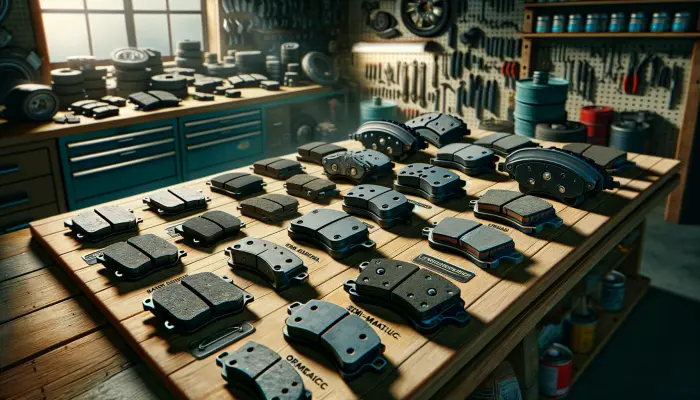Selecting the right brake pads is a crucial aspect of car maintenance. The safety of driving directly depends on the quality and timely replacement of these pads. To make an informed choice, understanding the key characteristics and features of different types of pads is essential. Let's delve into what you need to know about choosing brake pads.
Types of Brake Pads
There are several main types of brake pads, differing in material and attachment method. Let's consider the most common ones.
The first type is what's known as full-metal brake pads. Their main advantage is longevity, making them a frequent choice for commercial vehicles. However, they may not be suitable for passenger cars due to the increased noise during braking.
The second widely used type is semi-composite pads. They consist of a metal base and a composite material overlay. These pads provide an optimal balance of wear resistance and comfort.
Another popular choice is composite pads, made entirely from modern composite materials, usually based on ceramics and metal. They are characterized by smooth operation and low noise levels.
Material of Brake Pads
The material of the pads directly affects the braking efficiency and driving comfort.
Semi-composite and composite pads are the most common. They contain various mixes based on metals, ceramics, and fiberglass. Composite materials ensure optimal grip with the disc and resistance to high temperatures.
Organic pads based on different resins are also available. They are very quiet but tend to wear out faster.
When choosing pads, it's important to follow the car manufacturer's recommendations for your specific model.
Size and Shape of Brake Pads
The size and shape of the pads must precisely match the brake mechanism of your car.
Standards for brake systems can vary among manufacturers. Therefore, when buying new pads, it's essential to specify the make, model, and year of your car.
Pads are selected individually for each type of brake disc. Incorrectly chosen pads can lead to uneven wear, vibrations, and other braking problems.
Indicators of Brake Pad Wear
Timely replacement of worn pads is a crucial part of maintaining the brake system.
Main signs indicating the need for pad replacement:
- Visible minimum pad lining
- Screeching noise when pressing the brake pedal
- Increased brake pedal travel
- The car pulls to one side when braking
- Wear indicator light on the dashboard
Regularly check the condition of the pads, especially after long trips or aggressive driving styles.
Installation Features of Brake Pads
Installing new pads is a responsible procedure best left to professionals. If you're replacing them yourself, follow these rules:
- Thoroughly clean the disc and caliper surfaces from dirt and old lining
- Check the condition of protective elements (springs, retainers)
- Lubricate the contact points of the caliper and pads with special grease
- Install the pads strictly according to the instructions
- Press the brake pedal several times to bed in the new pads
After replacing the pads, it's recommended to break them in, so they conform to the disc and start working with maximum efficiency.
In summary, selecting and replacing brake pads is a crucial step affecting driving safety. Consider the type and material of the pads, and it's best to entrust their installation to experienced specialists. Timely replacement based on wear indicators will maintain the efficiency of your car's brake system.
